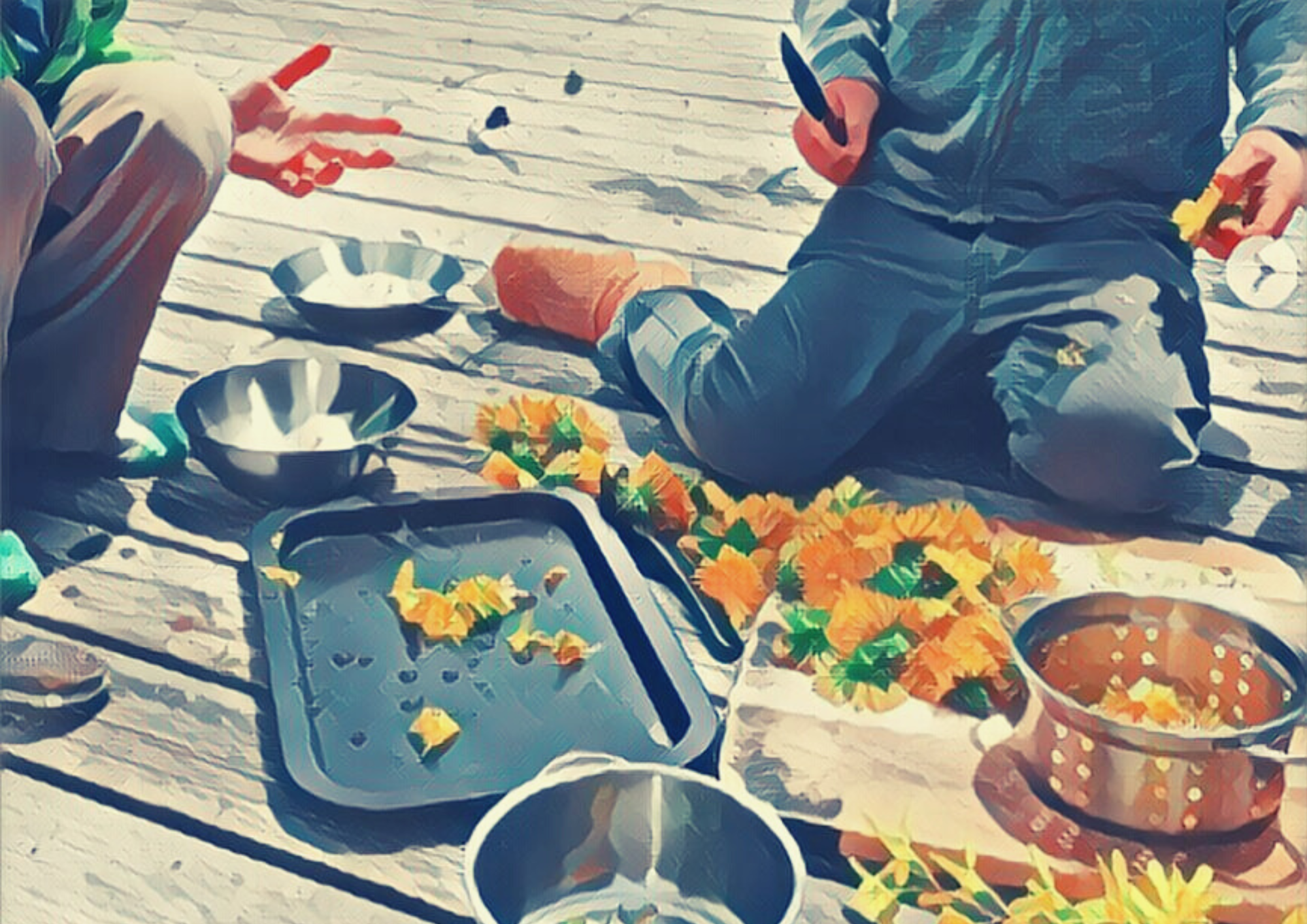9 Outdoor Play Spaces: Considering Materials

Many things the children know-
Where the ripest berries grow,
Where the first pale violets peep
Shyly from their winter’s sleep,
And how many blue eggs rest
In the robin’s woven nest.
Children know where echoes hide
Over on the brown hillside,
How to tell a fortune bright
By the daisy petals white,
How the honey you may sup
From the meadow clover’s cup.
-Excerpt from What Children Know by Lucy Maud Montgomery
Brief Overview
Rich outdoor play spaces include rich play materials. Play materials can be brought into diverse outdoor play spaces, found already in these spaces, or collected and brought into indoor play spaces.
Both synthetic and natural loose part materials can be added to outdoor play spaces to support play and learning in a variety of ways. Research has found that these types of materials provide more possibilities for diverse children to engage in play that is meaningful for them because they can bring their unique interests, imaginations, and needs to the materials rather than the materials dictating what should occur (Flannigan & Dietze, 2017).
Outdoor play spaces that are set in nature are full of natural loose parts for the children to discover and interact with on their own, finding their own play materials through connection. These connections can be supported and maintained by bringing natural play materials into play indoors and into the child’s daily life, showing that their connection to nature doesn’t only occur when they are in natural spaces, but rather it is a consistent feature of their life; they are always in connection.
A wonderful example of this might be a child discovering seeds dropped by a squirrel in an ECEC outdoor natural play environment. The child is drawn to this unique material and begins to interact. Through that interaction they start to wonder about how this unfamiliar material appeared on top of this soil. What is it? Where did it come from and why? Much more exploration and play can occur with this material in this setting, but what happens when the child takes one of the seeds with them and plants it inside their classroom? What happens when they have the opportunity to see a peanut tree start to sprout through the colder months? How might this impact what they bring to this material when they encounter it in the future outdoors?
Key Takeaways
Consider the unlimited nature of loose parts as you are moving through the eleven slides. A PDF transcript of the slides is also available.
Additional Resource
Get Inspired!
Have a look at the three blog posts below to see how and why ECEC are using loose parts and natural materials to support outdoor and/or nature play for all children:
Loose Parts: Let’s Play With Nature!
Why Natural Loose Parts?
Nature, the ultimate sensory experience for young children
Experience and Reflect
Visit an outdoor/nature play space in your community and pay attention to what play materials, if any, are present.
- Are there loose parts?
- If so, describe what types?
- If not, what might you add to the space to enhance the play and risk-taking opportunities for all children and why?
- What opportunities for risk-taking are afforded by the materials present?
References
Flannigan, C. & Dietze, B. (2017). Children, outdoor play, and loose parts. Journal of Childhood Studies, 42(4), 53-60.

